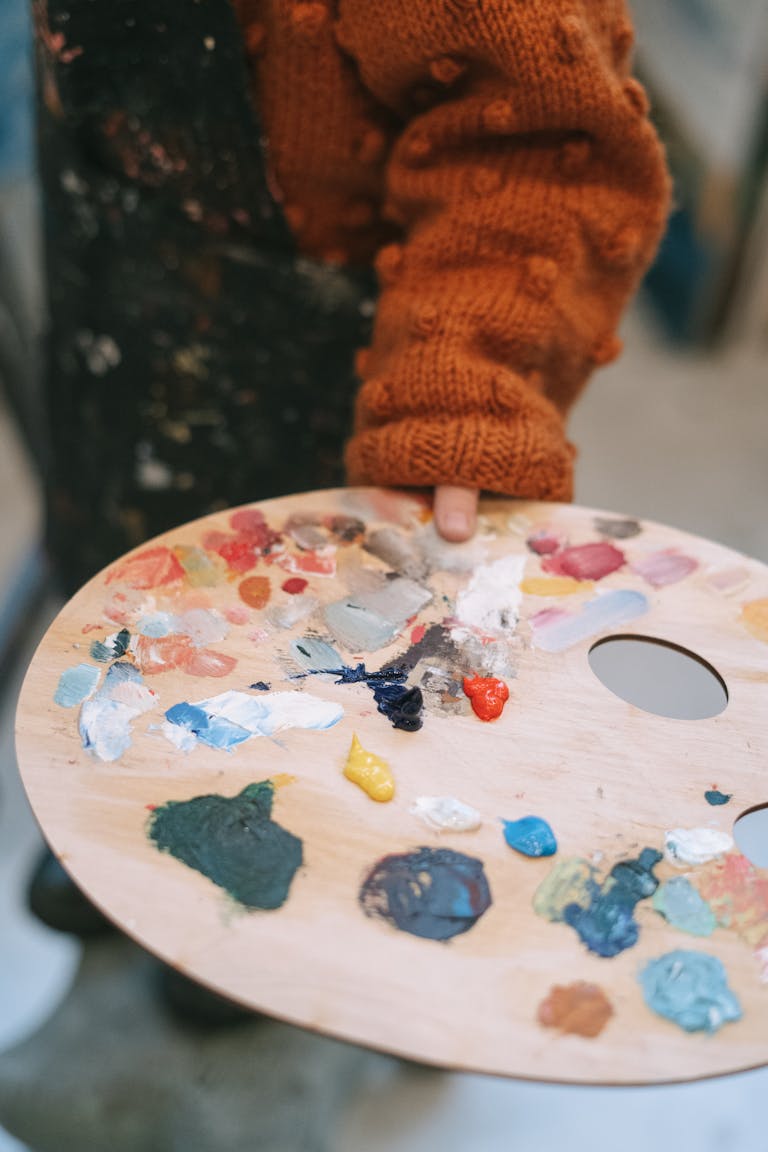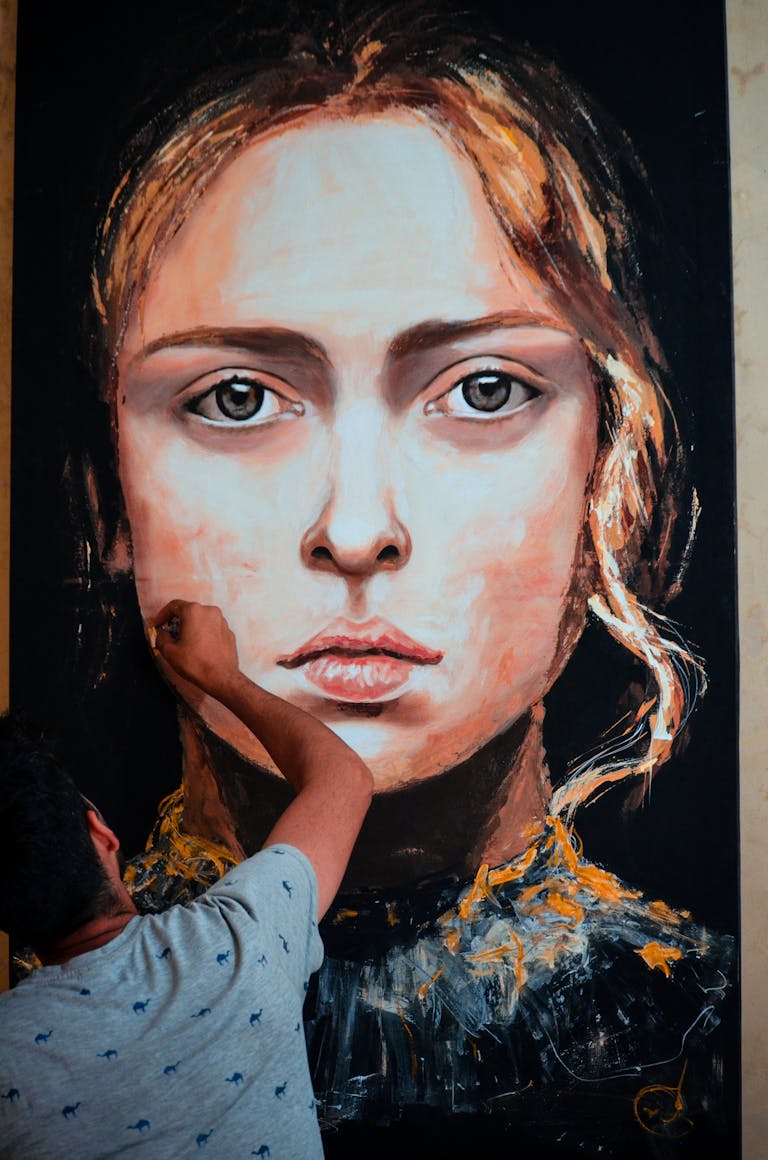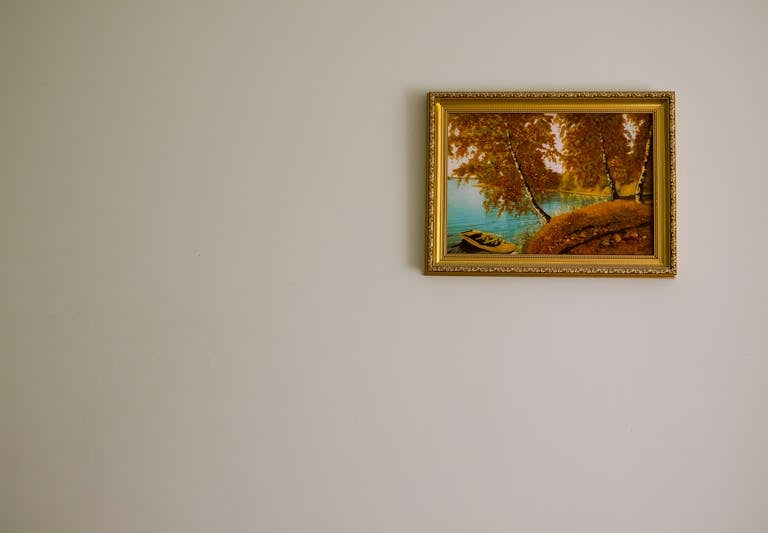Best Oil Paint Brush Sets for Beginners: A Complete Guide
Want to start painting but feeling lost in the brush aisle?
I get it – choosing your first oil paint brushes can feel overwhelming! After teaching hundreds of beginners in my studio, I’ve seen how the right brushes can turn frustration into fun. It’s like picking the perfect tool for a job – you wouldn’t use a sledgehammer to hang a picture frame, right?
Many new artists give up because they start with brushes that fight against them instead of working with them. But don’t worry – I’ll show you precisely what you need, from the must-have brush types to the best brands that won’t break the bank. Together, we’ll find the brushes to help you create the art you dream of. No fancy art-speak, just straightforward advice from someone who’s been exactly where you are.

Understanding Oil Paint Brush Types
Want to hear a funny story about my first brush-buying disaster? Picture me, a total newbie, standing in the art store staring at what felt like a million brushes! I grabbed the cheapest pack I could find, thinking, “How different could brushes really be?” Well, let me tell you – that mistake taught me a lot. After years of teaching art (and watching my students make the same goof-ups),
I’ve learned that brushes are like cooking tools – you need the right one for the job. Flat brushes are your kitchen knife, perfect for significant areas like skies, while round brushes are more like your teaspoon and great for tiny details. Then there’s my favorite, the Filbert brush – think of it as the Swiss Army knife of painting! It took me ages to realize that natural bristle brushes handle thick oil paint better, but I tell my students to start with synthetic ones because they’re more forgiving (and friendlier to your wallet).
The best tip I ever got? Gently bend the bristles – if they bounce back like a spring, that’s your brush! If they look like they’ve had a bad hair day, keep shopping. Trust me, spending a bit more on good brushes now will save you from finding tiny bristles stuck in your masterpiece later.

Essential Brushes for Beginners
After years of watching new painters struggle with too many brushes, you won’t believe what I discovered! Picture this: my student Sarah walked into class with a huge 30-piece brush set, looking lost. That’s when I knew I had to create what I now call my “Smart Start” method. Here’s the thing – you only need four brushes to create fantastic art, and I’ll tell you why.
Think of brushes like kitchen tools – you don’t need twenty spatulas, right? Through lots of trial and error (and saving my students from wasting money), I’ve found that a #6 flat brush, a #4 filbert for smooth blending, a #2 round brush for tiny details, and a 1-inch flat brush for significant areas are all you really need to start painting magic.
I learned this the hard way after watching countless students try to paint large canvases with tiny brushes – talk about a recipe for frustration! The best part? You don’t need to spend a fortune. Good synthetic brushes work great for beginners, and they’re much kinder to your wallet than those fancy sable ones.
Remember my golden rule: a good brush should spring back like a diving board when you bend it, not look like it’s having a bad hair day! Store them bristles up (trust me, I killed my favorite brush by soaking it in solvent), and they’ll be your faithful painting partners for years.

Brush Materials and Quality Markers
Let me share what I’ve learned about paintbrushes after years of teaching – and trust me, I’ve seen it all! Remember my first teaching days when I told everyone to buy the cheapest brushes they could find? Boy, was that a mistake!
Think of brushes like shoes – the good ones might cost more, but they’ll take care of your feet (or, in this case, your art). Natural hair brushes, especially hog bristle ones, are like work boots – tough and ready for heavy paint. Then there are the fancy sable brushes, more like dancing shoes – elegant and perfect for delicate moves.
But here’s the cool part: modern synthetic brushes have become excellent, like those comfy sneakers that work for almost everything! Want to know my secret for spotting a good brush? Give it a gentle bend – if it bounces back like a spring, you’ve got a winner. If it looks like bedhead hair, keep shopping.
I learned this the hard way after leaving my favorite brush in a hot car (spoiler alert: it didn’t end well). The best part? A good brush that’s well cared for is like an old friend – I still use my first professional brush from eight years ago, while I’ve watched students burn through countless cheap ones in just a few months.

Top Beginner-Friendly Brush Sets
You wouldn’t believe what I’ve learned about brush sets after helping hundreds of students! Picture this: my first “professional” brush set cost fifteen bucks, and those brushes lost their shape faster than an ice cream cone on a hot summer day. After watching students struggle with everything from budget sets to fancy expensive ones,
I’ve cracked the code on what really works. Here’s the sweet spot: spend about $40-60 on your first set, and look for names like Princeton Aspen – they’re like the reliable family car of paint brushes. Funny enough, those giant 50-piece sets you see online for $25 are trouble waiting to happen; one of my poor students spent an entire class picking loose bristles out of her painting!
Want to know a secret? Most pro artists don’t even use complete sets from one brand, but it’s super helpful to have brushes that work well together when you’re starting out. Think of it like cooking – you need essential tools to make amazing meals.
Test your brushes like this: give them a gentle bend (they should bounce back like a spring), run your fingers through the bristles (no shedding!), and check that metal part (called a ferrule) for any wiggling.
After five years of teaching, brands like Princeton, Winsor & Newton, and Royal & Langnickel for budget options will treat you right. Remember – your first set doesn’t need to be perfect; it just needs to help you create without fighting against you every step of the way!

Caring for Your First Brush Set
Want to hear about the $30 mistake that taught me everything about brush care? Picture this: I left my favorite Filbert brush soaking in turpentine overnight, and boy, did I regret it! After ruining too many brushes (and watching my students do the same), I’ve discovered the secrets to keeping them happy.
Think of brush cleaning as doing the dishes – nobody loves it, but it makes life much better! First, I wipe off extra paint with a paper towel (goodbye, ruined rags), then give them a gentle swirl in mineral spirits – but never let them sit in it like I did that one terrible time. The game-changer? Some Murphy Oil Soap and lukewarm water, working from the metal part to the tip until the water runs clear.
And please, don’t be like my student who stored her brushes standing on their bristles – they looked like they’d had a terrible hair day! Store them lying flat or standing up with the bristles pointing to the sky. Here’s the thing about brushes: treat them right, and they’ll be your painting buddies for years.
Leave the paint to dry in them, use hot water, or treat them like mixing sticks, and they’ll give up on you faster than a New Year’s resolution. Remember, even the best brushes eventually retire – when they start shedding like a golden retriever in summer or stay bent like a twist tie, it’s time to say goodbye.

Advanced Tips for Brush Selection
Sometimes, your old brushes stop working like they used to. After helping lots of students learn to paint, I found something cool! I discovered special brushes that changed everything. One is an Egbert brush – a regular brush with extra-long hairs, like a hairstylist with longer scissors to do unique cuts. It made my painting so much better!
I thought it was a gimmick until it gave me the softest, prettiest edges I’d ever seen in my clouds! Here’s a secret most art stores won’t share: mixing brush brands is often brighter than buying a complete set. I use Winsor & Newton for filberts (they’ve got this fantastic springy feel), Raphael for rounds (perfect pointy tips!), and Princeton for my flat brushes because they’re an excellent deal for bigger sizes.
Want to know how to test brushes like a pro? Give them the “snap test” – bend those bristles gently, and they should pop right back like a rubber band. Funny enough, I interviewed some professional artists recently, and most of them only use about five brushes for almost all their work – but you better believe those five brushes are top-notch!
Remember what I learned the hard way: not every fancy brush is worth buying (my expensive mottler brush has been collecting dust for three years), but when you find the right brush, it feels like it was made just for your hand.

Let’s Warp It Up
Don’t let all those rows of brushes at the art store scare you away from starting your painting journey! I remember feeling lost when I started, but here’s the thing – you only need a few good brushes to create something amazing. It’s like cooking: a few quality pots and pans beat a kitchen full of cheap ones any day.
Think of your brush set as your painting friends – pick ones that feel good in your hand and won’t fall apart when you need them most. Start small with just the basics we talked about, and guess what? As you paint more and discover your style, you’ll naturally figure out which other brushes you want to add to your collection.
The best part? Your perfect brush set is out there waiting to help you create the art you’ve been dreaming of. Ready to make some magic happen?






